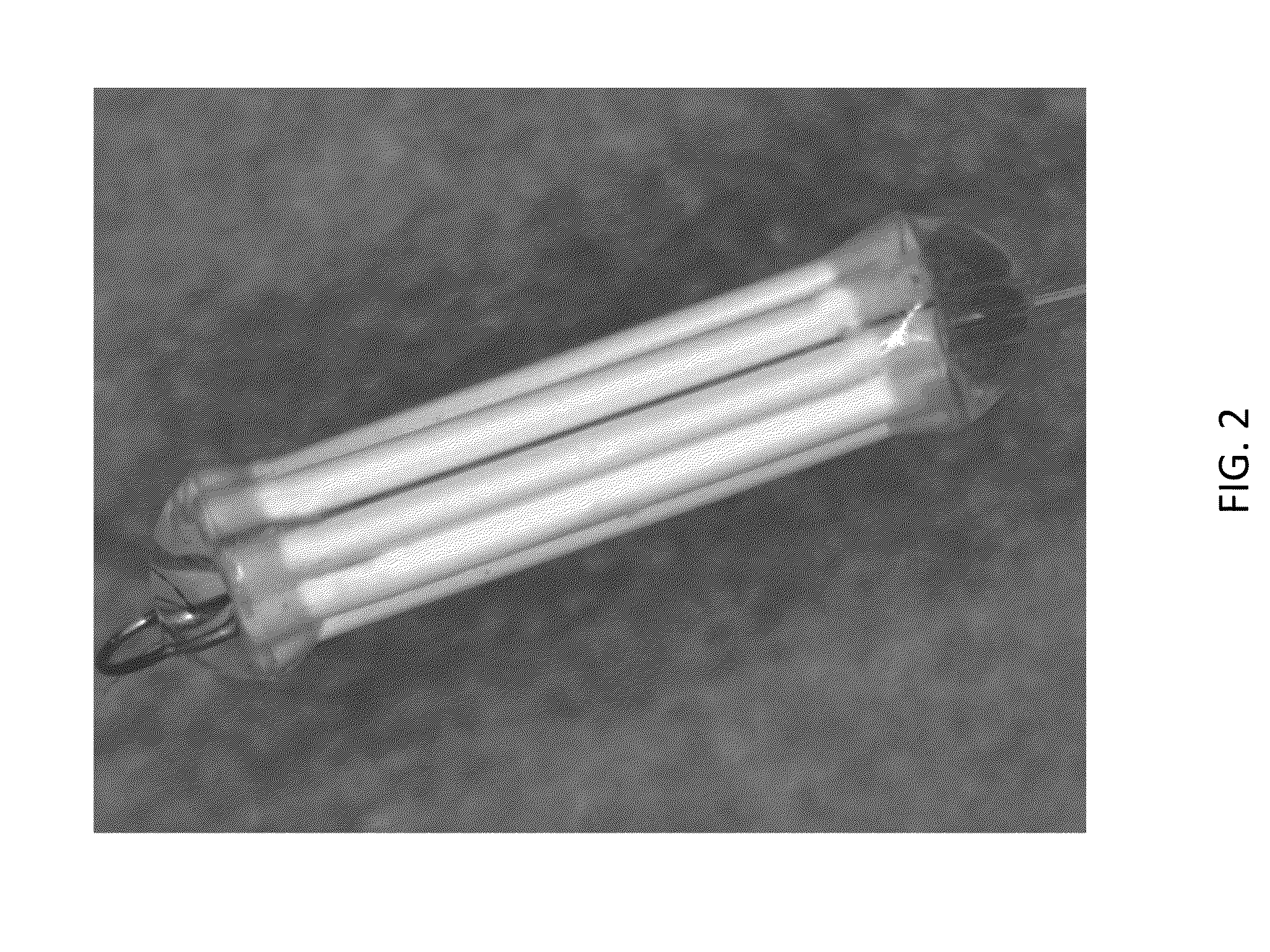Encapsulated Cell Therapy Cartridge
a technology of encapsulated cells and cartridges, which is applied in the direction of genetically modified cells, immunological disorders, metabolism disorders, etc., can solve the problems that the current encapsulated cell delivery devices used in the treatment of retinitis pigmentosa or geographic atrophy are limited in their ability to achieve the microgram production level of encapsulated cell produced protein drugs
- Summary
- Abstract
- Description
- Claims
- Application Information
AI Technical Summary
Benefits of technology
Problems solved by technology
Method used
Image
Examples
example 1
Multi-Chamber Cartridge Compared to Single Encapsulation Chamber of Equivalent Volume
[0168]Retinal pigment epithelial cells engineered to produce a soluble VEGF antagonist were cultured and prepared at a density of 50,000 per microliter in a serum-free media. Cells were encapsulated in a cartridge device manufactured with seven chambers each 400 microns inner diameter and 50 micron wall thickness and total length of 8.5 mm. Cells were also encapsulated in a 1.3 mm single chamber device, 8.5 mm in length with an approximate equivalent volume to the chambered device. Both device groups were encapsulated with equivalent cell number, cell volume and rate of cell infusion. Devices were conditioned in culture media for 1 week prior to implant in eyes of New Zealand White rabbits. Cohorts were evaluated prior to implant to determine VEGF antagonist expression using ELISA specific for the soluble VEGF antagonist and viability of the encapsulated cells following histological processing (plas...
example 2
Cell Efficiency as a Function of Decreasing Diffusion Distance
[0172]Individual chambers with varying internal diameters were cell encapsulated at the following volumes: 3, 4, 6 and 10 microliters. Devices were evaluated prior to implant at again following both 2 and 4 week implant periods in the rabbit vitreous. Expression of VEGF antagonist and histology was assessed for each group at the pre-implant and explant periods. Expression levels were compared and an efficiency of VEGF antagonist expression as a function of cell number was determined
[0173]FIG. 7 shows the expression level of VEGF antagonist over time for each group. It is apparent that the greatest change in expression occurs from the chamber device with the greatest internal diameter. As the diameters decrease the change in expression of VEGF antagonist decreases. An efficiency of VEGF antagonist expression as a function of chamber inner diameter is shown in FIG. 8.
example 3
Cartridge Shelf-Life Stability
[0174]Cartridge devices were manufactured with 5 individual chambers each having an internal diameter of 600 microns. Devices were encapsulated at various conditions of cell density and volume (B, C, D group as shown in FIG. 9) with ARPE-19 cell engineered to express VEGF antagonist and compared to a single chamber device (i.e., the control group in FIG. 9). Following encapsulation devices were placed in packages containing serum-free culture media and sealed. Device expression of VEGF antagonist was evaluated over time and the results are found in FIG. 7. Cartridge expression of VEGF antagonist was approximately 3-4 fold greater than the control group at all time points and irrespective of the individual loading conditions. Cartridge expression remained stable over the evaluation period.
PUM
| Property | Measurement | Unit |
|---|---|---|
| inner diameter | aaaaa | aaaaa |
| inner diameter | aaaaa | aaaaa |
| length | aaaaa | aaaaa |
Abstract
Description
Claims
Application Information
 Login to View More
Login to View More - R&D
- Intellectual Property
- Life Sciences
- Materials
- Tech Scout
- Unparalleled Data Quality
- Higher Quality Content
- 60% Fewer Hallucinations
Browse by: Latest US Patents, China's latest patents, Technical Efficacy Thesaurus, Application Domain, Technology Topic, Popular Technical Reports.
© 2025 PatSnap. All rights reserved.Legal|Privacy policy|Modern Slavery Act Transparency Statement|Sitemap|About US| Contact US: help@patsnap.com



